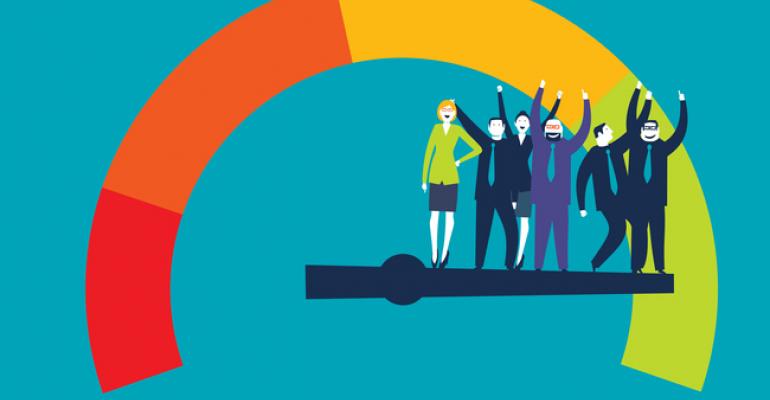By Ashley Welch and Justin Jones
It’s getting to be that time of year again—time to plan the annual sales kick-off meeting. This is no small task. In addition to selecting a destination, blocking rooms, and finding meeting space, there’s an unspoken pressure to top last year’s event. How can we make it bigger and better? What guest speakers will inspire? What awards will mean the most to our top performers?
The best way to start is to look at your meeting from your customer’s point of view. Here are five customer-centric ideas to make your next kickoff the best yet:
1. Strategic account planning. When we think about strategic accounts, we tend to think of our top accounts, the customers who buy the most from us. At a kick-off meeting, time is often allotted to reviewing what additional products and services can be sold to increase revenue and further solidify the partnership. This is important work, but it can quickly become insular—me, me, me. Our products, our services, our bottom line.
The reframe? Rethink about who you consider to be your strategic accounts in terms of “extremes” and “mainstreams.” Your mainstream customers could be those larger accounts who buy and enjoy a significant amount of your products and services. But you should also consider including some of your extreme customers—find out who is doing the most interesting things with your products and services, and invite them to join a customer panel and talk about their strategic accounts.
2. Invite customers to recognize your top performers. Sales people work hard, and it’s easy for your best sales people to become isolated in the field. For these and many other reasons, it’s so important to recognize your top performers in front of their peers. Consider inviting your top performers’ customers to speak about them—perhaps even give them an award. It’s probably the best praise your team could receive.
3. Spur innovation with analogous situations. We often hear from our clients that they desire to inspire. Customers want to work with motivated sales professionals who can help them think more creatively. This is where analogs come in. To come up with a great analog, reflect for a moment on a specific issue your business is trying to overcome. Then, consider completely different contexts where people have figured out a way to solve that very same problem. Here’s an example:
One team we worked with didn’t think they connected enough with their customers. They felt that much of the work that enabled their customers’ success happened behind the scenes, which made them feel less motivated.
The analog: This team’s meeting was in New Orleans, so we took them to visit one of Emeril Lagasse’s famous restaurants. Much like this team, chefs and sous chefs work behind the scene, and yet it’s their work that customers are ultimately enjoying. The team spent time interviewing the executive chef, several sous chefs, and the general manager about their experiences. As a result, they started to think differently about how they could engage more with their customers and stay motivated.
4. Product and marketing updates. We feel it’s important to close the gap between your company and your customers, as well as your product developers, marketers, and salespeople. Instead of inviting your marketing and product peers to download their latest and greatest, ask them to bring their news along with a sharpened pencil, and use kickoff time to connect product, marketing, and your salespeople with customers by inviting customers to the event—especially your extreme and mainstream customers. Think of this as piloting conversations with customers about new offerings and getting real-time feedback from the people who matter the most—the ones who will buy it.
5. Skill-building. Our final tip relates to building the skill set of your salesforce. Sales people are always looking for ways to hone their skills, improve their game, and enjoy greater success. Here’s one of our favorite customer-centric exercises:
Send sales people where they feel most comfortable—out in the field! Research retail centers in the location of your kick-off event. Try to locate high- and low-end stores within a common vertical; for example, Toys R Us and Build-a-Bear for children’s toys, or a Chevy and a Tesla dealership for cars. This exercise is best done in pairs: Assign each pair to visit their two stores and pay careful attention to what increases or decreases customer engagement. We guarantee your teams will come back inspired by the amazing (and amazingly awful) things they experienced, and will have fresh insights they can apply to their own customer relationships.
Thinking about your kick-off from your customer’s perspective can simplify and inspire your kick-off planning and lead to highly productive outcomes and a successful new year. We encourage you to shake up your next kick-off and try these ideas to keep your customers right where they belong: at the center of everything.
Ashley Welch and Justin Jones cofounded Somersault Innovation, a design thinking consulting firm providing a unique approach to sales development. They are the authors of Naked Sales: How Design Thinking Reveals Customer Motives and Drives Revenue. For more information, please visit www.somersaultinnovation.com.





